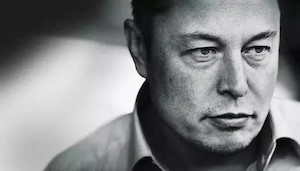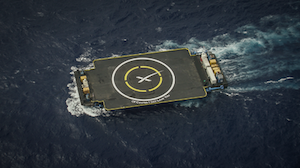Space X
The next company founded by Musk was spaceX. In 2001, Musk conceptualized "Mars Oasis"; a project to land a miniature experimental greenhouse on Mars, containing food crops growing on Martian regolith, in an attempt to regain public interest in space exploration. In October 2001, Musk travelled to Moscow with Jim Cantrell (an aerospace supplies fixer), and Adeo Ressi (his best friend from college), to buy refurbished ICBMs (Dnepr) that could send the envisioned payloads into space. The group met with companies such as NPO Lavochkin and Kosmotras, however, according to Cantrell, Musk was seen as a novice and was consequently spat on by one of the Russian chief designers, and the group returned to the United States empty-handed. The group met again with Kosmotras, and were offered one rocket for US$8 million, however, this was seen by Musk as too expensive; Musk consequently stormed out of the meeting. On the flight back from Moscow, Musk realized that he could start a company that could build the affordable rockets he needed. According to early Tesla and SpaceX investor Steve Jurvetson, Musk calculated that the raw materials for building a rocket actually were only 3 percent of the sales price of a rocket at the time. With US$100 million of his early fortune, Musk founded Space Exploration Technologies, or SpaceX, in May 2002. The company's first two launch vehicles are the Falcon 1 and Falcon 9 rockets (a nod to Star Wars' Millennium Falcon), and its first spacecraft is the Dragon (a nod to Puff the Magic Dragon). In September 2008, SpaceX's Falcon 1 rocket became the first privately funded liquid-fueled vehicle to put a satellite into Earth orbit. On May 25, 2012, the SpaceX Dragon vehicle berthed with the ISS, making history as the first commercial company to launch and berth a vehicle to the International Space Station. Musk's goal is to reduce the cost of human spaceflight by a factor of 10. In a 2011 interview, he said he hopes to send humans to Mars' surface within 10–20 years. In Ashlee Vance's biography, Musk stated that he wants to establish a Mars colony by 2040, with a population of 80,000. Space X intends to launch a Dragon spacecraft on a Falcon Heavy in 2018 to soft-land on Mars - this is intended to be the first of a regular cargo mission supply-run to Mars building up to later crewed flights. ("Elon Musk" n.d.)
But what really sets SpaceX apart, and has made it a magnet for controversy, are its prices: As advertised on the company’s Web site, a Falcon 9 launch costs an average of $57 million, which works out to less than $2,500 per pound to orbit. That’s significantly less than what other U.S. launch companies typically charge, and even the manufacturer of China’s low-cost Long March rocket (which the U.S. has banned importing) says it cannot beat SpaceX’s pricing. By 2014, the company’s next rocket, the Falcon Heavy, aims to lower the cost to $1,000 per pound. And Musk insists that’s just the beginning. “Our performance will increase and our prices will decline over time,” he writes on SpaceX’s Web site, “as is the case with every other technology.” Like the Chinese, many observers in this country are wondering how SpaceX can deliver what it promises. (Chaikin, Is SpaceX Changing the Rocket Equation?)
| Rocket Model | Cost to Launch | Maximum Payload Weight | Number of Engines |
|---|---|---|---|
| Falcon 1 | $9Mil | 400 lbs | 2 |
| Falcon 9 | $62Mil | 50,265 lbs | 10 |
| Falcon Heavy | $90Mil | 119,930 lbs | 28 |
 Titans of Industry
Titans of Industry
